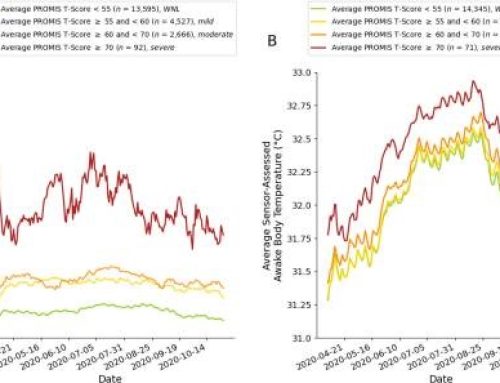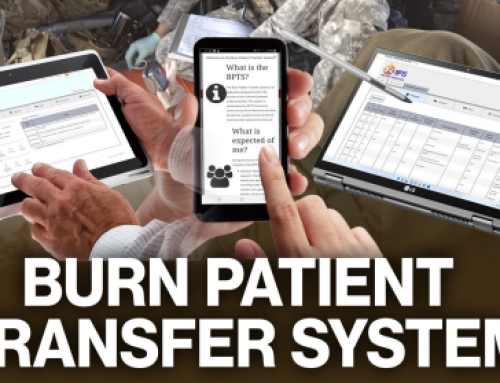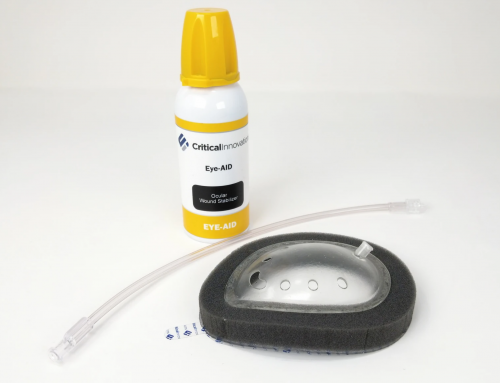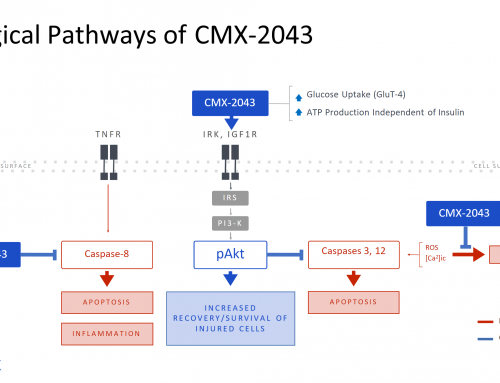With support from the U.S. Army Medical Research and Materiel Command (USAMRMC), the Islam Group at the University of Michigan in Ann Arbor, in collaboration with teams at Northwestern University and the University of California at Davis, has developed a noninvasive method of monitoring cerebral, tissue, or organ metabolism and hemodynamics simultaneously through super-continuum infrared spectroscopy of cytochrome c oxidase (SCISCCO). Studies using this system aim to test its use in the early diagnosis and monitoring of conditions such as concussions, stroke, and traumatic brain injury. Early identification and treatment of these conditions can drastically improve the potential outcomes of further medical treatments and interventions leading to the swifter recovery and rehabilitation of our Service Members and Veterans.
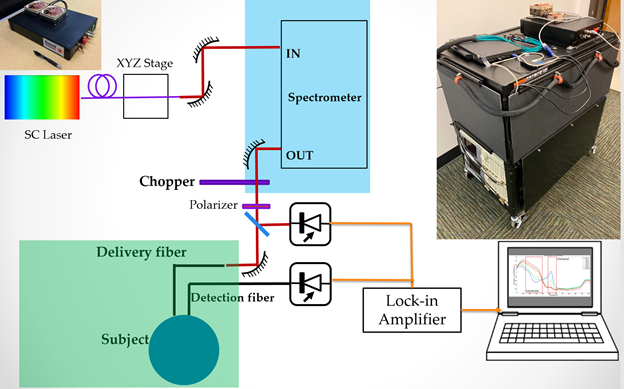
Bleeding, especially non-compressible internal bleeding, is the major cause of preventable trauma-related deaths in both the military and civilian settings. Most of these deaths occur within the first hour (dubbed the “Golden Hour”), and there is a critical need for therapies that can stabilize patients long enough for them to be safely transferred to higher echelons of care for definitive repair of injuries. For external sources, advanced hemostatic dressings and tourniquets can be used to control the bleeding, but no such tools are available for the control of internal hemorrhage.
While bleeding is the number one cause of preventable cause of death, traumatic brain injury has been deemed the signature injury of the wars in Iraq and Afghanistan. Department of Defense data revealed that 235,046 service members (or 4.2% of the 5,603,720 who served in the Army, Air Force, Navy, and Marine Corps) were diagnosed with a TBI between 2000 and. Over 320,000 troops suffered from TBI from 2010 to 2015. The majority of TBI survivors (75%) have mild traumatic brain injury (mTBI), or concussion. mTBI involves a brief change in mental status with no currently observable structural damage to the brain, which makes it a challenge to diagnose. However, individuals with mTBI may still suffer from life-long cognitive or psychological challenges including memory problems and post-traumatic stress disorder (PTSD). 43.9% of U.S. Army infantry soldiers returning from Iraq who suffered mTBI also reported symptoms of PTSD. Physical, sensory, and cognitive symptoms are progressively worse in moderate-to-severe injury, affecting more than 8,000 military personnel from 2010 to 2015. With structural damage to the brain, these patients require immediate medical intervention, evacuation, and intensive care in the acute setting and often life-long assistance thereafter. While TBI is the signature wound of recent wars, the military still has no objective way of diagnosing it in the field.
SCISCCO uses a super-continuum laser (SCL) whose high brightness permits simultaneous high signal-to-noise ratio measurements of cytochrome c oxidase (CCO), oxygenated hemoglobin (HbO), and deoxygenated hemoglobin (HbR) allowing the surveillance of these biomarkers for any changes that might occur after head injury. A self-contained, portable, ruggedized, cart-based SCISCCO prototype has been assembled and used in swine animal studies with hemorrhage shock followed by treatments using aortic balloons with and without drug supplementation, and the fidelity is verified by comparison with existing laboratory monitors. Laboratory measurements of the CCO solutions, as well as human response to breath-holding challenges, are principled and consistent with previously reported studies. Based on these successful laboratory experiments that proved the efficacy of the SCISCCO system, the MTEC project decided to move toward developing a prototype of the SCISCCO system for further animal and human studies.
The cart-based SCISCCO prototype system was assembled integrating the necessary hardware and software into a single portable instrument for use in hospital and lab settings at remote locations or for portability within a hospital. The rolling cart system has three levels: the top level comprises the SCL and laptop for processing, the middle level comprises the optical system hardware, and the bottom level comprises the electronics and lock-in amplifiers. A convenient GUI permits the user to input the measurement parameters and view the metabolic and hemodynamic data as a function of time. The stability of the cart-based prototype was verified by rolling the cart through buildings with brick flooring and driving in a van over local paved and dirt roads while measuring the spectral and power output as well as the balance between the sample and reference arms of the set-up.
To validate the fidelity of the SCISCCO system, several experiments were initially conducted with laboratory mixtures or healthy participants. First, the CCO was measured in vitro to confirm the NIR absorption spectrum for CCO. Then, to demonstrate in vivo feasibility, the measured responses of oxygenation and CCO changes during the blood pressure tests in the human participants were compared to data from the literature. The hemodynamic response during the physiological breath-holding tests, as well as the cognitive attention tests, were shown to be comparable between the SCISCCO system and a commercial fNIRS system.
Next, a pilot human study of 25 participants was conducted using a cognitive attention test. The results showed that during the attention task, the level of HbO increased and the level of oxidized CCO decreased. The measured behavior was consistent with prior studies showing an increase in HbO in the frontal lobe during attention tasks and the interpretation of the CCO redox state as an indicator of cellular ATP demand and metabolism in the active brain region. These data suggest that SCISCCO provides a noninvasive, simultaneous measurement of both the cerebral hemodynamic response and metabolic demand using a noninvasive optical sensor.
At Northwestern University Medical Center, the cart-based SCISCCO prototype was used in a series of swine animal tests aimed at controlling bleeding. Specifically, the SCISCCO prototype was applied to swine animal models undergoing HS followed by pREBOA or pREBOA with VPA drug treatment. The data collected by the SCISCCO system were validated against other instruments, such as those used to measure arterial blood gases and the mean arterial pressure. Additionally, the pilot animal studies established the feasibility of using the SCISCCO prototype within the context of existing protocols. The measured HbR and HbO concentration changes across different clinical phases during the 8-hour continuous measurements were consistent with our expectations based on physiological principles. Although this data is still preliminary and being further validated, the CCO concentration changes seen in these experiments provide new insights into the swine metabolic reactions during the different phases of HS and the treatment using pREBOA with and without VPA.
Human studies are currently being conducted by the UM Neurosurgery department. The goal of this continuation project is to demonstrate that the non-invasive SCISCCO instrument applied to humans provides data that correlates with established contact-based instruments (e.g., oximeters used in the ICU) as well as invasive devices such as the intracranial pressure ICP and brain tissue oxygen PbtO2. In this project, the SCISCCO instrument will be used in human studies in an intensive care unit (ICU) setting. For a normative calibration, the SCISCCO instrument will first be used on healthy participants or patients without abnormal readings in the ICU, and the correlation with other sensors such as blood oximeters will be evaluated. Then, the SCISCCO instrument will be used with TBI patients in the ICU that have the ICP and PbtO2 sensors implanted, and the SCISCCO data will be correlated and evaluated against the invasive sensor data.
The SCISCCO system provides a noninvasive tool for monitoring changes in metabolism as well as hemodynamic response. Using the all-fiber integrated SCL as the key enabling technology, the SCISCCO system has the potential of being a practical, cost-effective, portable, and noninvasive means of monitoring brain and organ oxygenation and metabolism in the emergency department, operating room, or other medical facilities. Applications of the SCISCCO system could range from a new tool for screening concussion patients (such as being used in the cognitive attention test results) to use in an intensive care unit to gauge a patient’s organ response to treatments (such as the cart-based system used in the animal trials).
This work has been recently published in Applied Sciences, and a patent for this technology has been filed and published (US 2021/0236043). A follow-on program has been proposed that aims to compare tissue viability with hemodynamic and metabolic response during ischemia and reperfusion with REBOA or tourniquet procedures. The research project award recipients were selected from the respondents to MTEC’s Request for Project Proposals soliciting medical technological solutions related to MTEC’s Technology Focus Areas (Solicitation #MTEC-17-08-MULTI-TOPIC).

